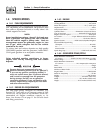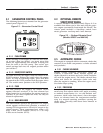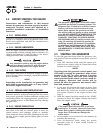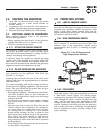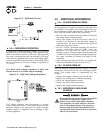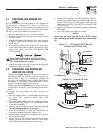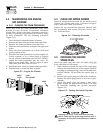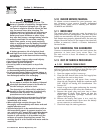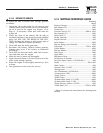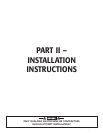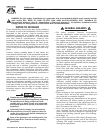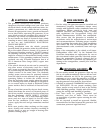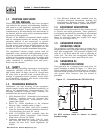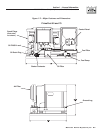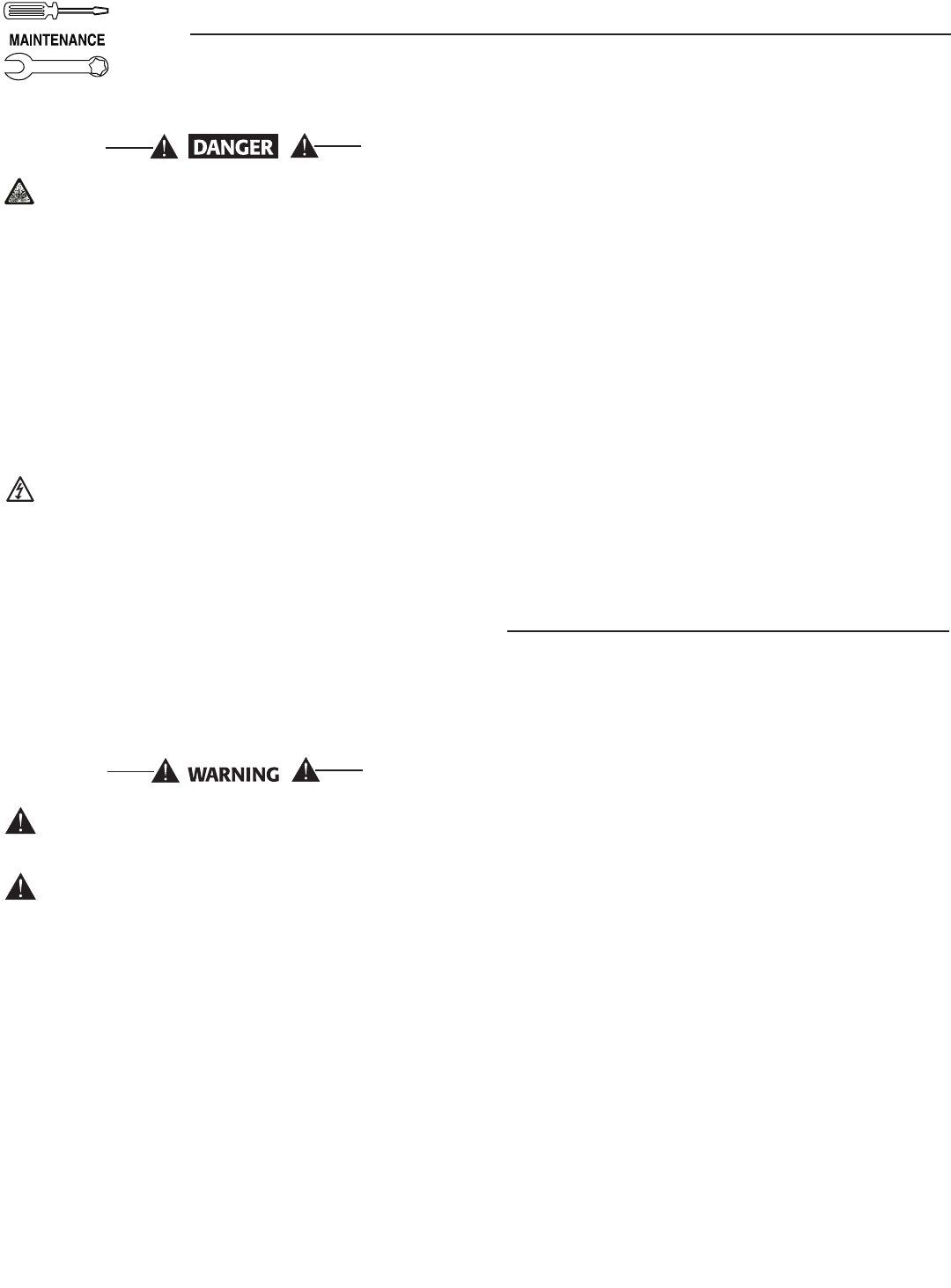
14 Generac
®
Power Systems, Inc.
Do not dispose of the battery in a fire. The
battery is capable of exploding. Storage batter-
ies give off explosive hydrogen gas. This gas
can form an explosive mixture around the bat-
tery for several hours after charging. The
slightest spark can ignite the gas and cause an
explosion. Such an explosion can shatter the
battery and cause blindness or other injury.
Any area that houses a storage battery must be
properly ventilated. Do not allow smoking,
open flame, sparks, or any spark producing
tools or equipment near the battery. Discharge
static electricity from your body before touch-
ing the battery by first touching a grounded
metal surface.
A battery presents a risk of electrical shock
and high short circuit current. The following
precautions are to be observed when working
on batteries:
• Remove watches, rings or other metal objects;
• Use tools with insulated handles;
• Wear rubber gloves and boots;
• Do not lay tools or metal parts on top of the
battery;
• Disconnect any charging source prior to connecting
or disconnecting battery terminals; and
• Do not use any jumper cables or booster battery to
crank and start the generator engine. If any battery
has discharged, remove it for recharging.
Do not open or mutilate the battery. Released
electrolyte has been known to be harmful to
the skin and eyes, and to be toxic.
The electrolyte is a dilute sulfuric acid that is
harmful to the skin and eyes. It is electrically
conductive and corrosive. The following
procedures are to be observed:
• Wear full eye protection and protective clothing;
• Where electrolyte contacts the skin, wash it off
immediately with water;
• Where electrolyte contacts the eyes, flush
thoroughly and immediately with water and seek
medical attention; and
• Spilled electrolyte is to be washed down with an
acid neutralizing agent. A common practice is to
use a solution of 1 pound (500 grams) bicarbonate
of soda to 1 gallon (4 liters) or water. The bicar-
bonate of soda solution is to be added until the
evidence of reaction (foaming) has ceased. The
resulting liquid is to be flushed with water and the
area dried.
3.10 MAJOR SERVICE MANUAL
To obtain a service manual for your generator, con-
tact Generac or your nearest Generac Authorized
Service Dealer. Make sure to identify your MODEL
NUMBER and SERIES.
3.11 DRIVE BELT
The engine drives the generator rotor by means of a
pulley and drive belt arrangement. The drive belt and
pulleys are warranted for the life of the generator. Drive
belt tension was properly adjusted before the unit was
shipped from the factory. If you suspect that drive belt
tension is incorrect, contact a Generac Authorized
Service Dealer.
3.12 EXERCISING THE GENERATOR
Generac recommends that you start and operate the
generator at least once every seven days. Let
the unit run for at least 30 minutes to “exercise”
the engine.
3.13 OUT OF SERVICE PROCEDURE
3.13.1 REMOVAL FROM SERVICE
If you cannot exercise the generator every seven days,
and it is to be out of service longer than 30 days, pre-
pare the generator for storage as follows:
1. Start the engine and let it warm up.
2. Close the fuel shutoff valve in the fuel supply line
and allow the unit to shut down.
3. While the engine is still warm from running,
drain the oil completely. Refill the crankcase with
SAE 10W-30 oil having API classification “For
Service SF.”
4. Attach a tag to the engine indicating the viscosity
and classification of the oil in the crankcase.
5. Remove the spark plug and pour two or three
tablespoons of clean, fresh engine oil into the
spark plug threaded openings. Reinstall and
tighten the spark plug.
6. Remove the battery and store it in a cool, dry
room on a wooden board. Never store the battery
on any concrete or earthen floor.
7. Clean and wipe the entire generator.
◆
Section 3 – Maintenance
PRIMEPACT 50 and 70 (50Hz) Recreational Vehicle Generators



